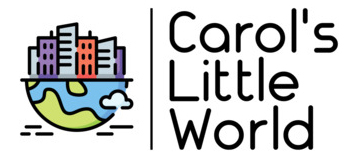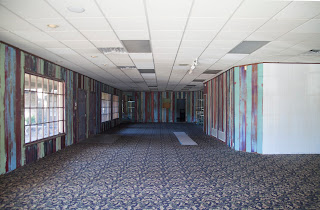There’s been a lot of talk recently about the recent Reuter’s ban on RAW files. What will this mean for photography? Will it really make a difference? Do people care? Will photographers follow the directive? Lots of interesting questions coming out of the wash on this one, I’d have to say.
For starters, most of the “general population” doesn’t really get all of the hoopla. I would venture a guess that probably 70% of folks out there really don’t know (and don’t care) what a RAW file is. That’s fine, that how specialization works, right? I mean, you don’t have to be an automobile manufacturer to drive a car, right? So why should we expect Grandma reading the Sunday paper to care all that much about RAW files? All well and good, I suppose and, you know, she probably doesn’t care all that much (most of the time.)
When digital photography started, many photographers were trained on the beauty of RAW files. They were the “direct from camera” equivalent of shooting a good negative. Many photographers (and I must confess, in the interest of full disclosure here, to being one of them) feel that it’s best, it’s always best, to try and get things right “in camera.” By that, I mean, sure we use Photoshop, just as we used to correct things in the darkroom but the goal, the object of the game, you would start out your day in the field, trying to shoot the thing right when it was in front of you. Yes, you could always try darkroom heroics but really the universe was a better place, and we were all really better off, if you could just shoot it straight from the beginning. Many, many, probably almost all were trained on this at some point, even if we look like we spend hours a day with our collective thumbs on a clone stamp icon (trust me on this one.)
OK, so we’ve established RAW is good and most people don’t care. Ah, life was sweet for a while there, wasn’t it? We were living in the glorious land of the RAW file, where pixel dumps were kings and everybody could play all day in fields of magenta, cyan, and whatever other color correction they felt like at the time. Of course, there had to be a wrinkle in all of this and the wrinkle started during the Iraq war. Some photographer, you see, shooting in wonderful fields of RAW and army grit decided to upload an image of Baghdad all covered in smoke and that smoke, you see, was changed in the land of JPG. No more was smoke light and fluffy, no, it was now dark, black and sinister and no more was the photographer reporting “truth” no, this was evidence that the word had been “altered” somehow. Oh that evil clone stamp, how you’ve done me wrong! And, please, don’t even get me started on those curves and levels. Surely, there must be some ulterior motive behind all of the evil in the world today, no? Who knew all along that curves and levels were really some kind of communist plot attempting to take over the world one histogram at a time?
If that were not bad enough, there was once a photo contest. (Oh the horror! Bear with me on this one.) Now, it wasn’t just any old photo contest, no, it was one of those “nature as you see it” kind of contests, one of the ones where you are supposed to show us your world, warts and all, and we were supposed to find beauty in the mundane or at least, you know, some old crappy couch somebody saw fit to drag to the curb because, like, isn’t that what everybody always photographs for those silly contents anyway. Yes, you can almost guess how this story ends. Somebody put a photo in a contest that had been, gasp, doctored, and this, why this, was a game changer. RAW files, once king of all the land would now be banished. Truth, it seemed, lies only in a JPG.
So, we’ve gone from JPG’s being bad, to JPG’s being bad, bad, bad, to RAW being bad, to RAW being banished. Reuter’s recently issued a decree telling us to “phase out” RAW format files, opting instead to go with “straight from the camera” JPEG files instead. Now, again in the interest of full disclosure, I’m not a photojournalist (never have been maybe never will be) and I don’t shoot or speak for Reuter’s, but this war on the JPG file format, is it really justified? Should I even chime in on this really? Well, since I do shoot a lot and, of course, I have an opinion about this, I thought I would pass along my two cents. Take them for what they are worth, two pennies here, no more no less. So, here goes.
For starters, there is nothing “evil” or inherently “untruthful” about a RAW file. It’s not the file format that speaks the truth, for crying out loud, it’s the photographer. If you don’t trust the photographer, what difference does it make if the file format is RAW, JPEG, or, heck, even a sketchpad and a crayon?
Next we have Reuters itself. They are a news agency. They make the rules for their agency. If they want to make a rule banning socks on Tuesday and RAW files all week long why, it’s their right isn’t it? Nobody is forcing you to shoot for Reuters. If you don’t like their rules, you can always take your work elsewhere. They are free, at least they should be, to control their workflow if they see fit to do so. I don’t begrudge them for this. If JPEG makes more sense for them then, hotdogs! Go ahead and use that. I’m a big fan, always have been and always will be, of using what works. It makes for better images in the long run.
Some folks are getting crafty out there and saying, “Well, this hoopla doesn’t matter really, because you can make a JPG from a RAW file.” Yes, you can. But, it’s my understanding (and I may be wrong here, recall I did say I do not work for Reuters) they haven’t only banned RAW files, they want photographers to shoot in JPG. The theory is shoot in RAW and JPG and submit the JPG to them for news coverage, so the little “I can just Photoshop it into a JPG” trick won’t work (at least that’s how the initial announcement was interpreted.)
Still other folks have commented that the entire discussion is ironic, seeing that RAW files are actually closer to straight from camera dumps than their JPG counterparts. While this may hold true, the news agency feels that RAW files require processing, which can both open the image up to interpretation and provide an extra time commitment to get to press. Again, their agency, their rules, possibly even their truth, make of it what you will.
The bottom line for me is that, if you have photographers working for you who are going to “doctor” images, they will “doctor” them even if you remove a file format from the bag of tricks. The discussion reminds me a little bit of a factory that doesn’t trust their employees not to steal so they put up mirrors in the men’s room. The entire thing begs the question, why do you need security? If you don’t trust your employees, why did you hire them in the first place? It’s like missing the forest for the trees, really that is.
As for myself, I am also reminded of the inconvenient truth that processing files did not begin, nor will it end with Photoshop. Remember Edward Curtis and the manipulated image? To put it another way, is an image more doctored if you ask somebody to “smile for the camera,” if you clone stamp out a blemish on their nose, or if you shoot them in RAW and bump the curves and levels? Sorry folks but there just is no right answer in all of this.
As for the JPG file format, much like bell bottom pants, I’m almost happy to see it sprout up, be killed by the RAW format sword of justice, then rise up in the zombie apocalypse only to eat all of our collective brain cells in the end. Heck, at this point, I’d have to confess, the way I see the scoreboard from where I sit is about JPG file format: 1 human race: 0 but it’s early yet and we could still screw this one up even more than we already have. Oh, and in case you are really wondering and it’s not obvious by now, yes, I am still shooting in RAW format. Why not, right?
Until next time…
This image taken in Salado, Texas, with a Canon 5D Mark II and the walkabout zoom lens. Mmm. Big empty rooms, more empty than JPG files and I hope to keep them that way.

